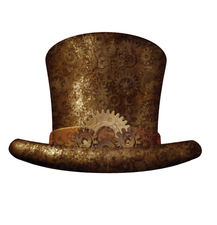DDS-based Rasp Pi function generator
Pass the Hat

© Lead Image © lightwise, 123RF.com
A touch display, a case, and a custom add-on board transform the humble Rasp Pi into a high-performance function generator that rivals expensive commercial offerings.
Modern laboratory instruments are a marvel of integration, combining hardware, software, and often mechanical components to produce versatile and highly functional units that bring real value to the engineers and technologists who use them. In this article, I aim to show how such an instrument might be put together by combining the Raspberry Pi with several elements to provide a low-cost and flexible function generator that can rival its more expensive commercial cousins on price and possibly beat them in terms of flexibility.
Function Generator
A signal or function generator is a versatile frequency source able to output a signal in a number of output waveshapes and at an adjustable amplitude and frequency from direct current (DC) up into the high-frequency electromagnetic radio frequency (RF) region, depending on the application. Sophisticated instruments can also include frequency, phase, or amplitude modulation useful for testing radio transmitters and receivers.
No engineer's workbench is complete without such an instrument. Together with an oscilloscope, it allows an engineer to characterize the frequency and phase response of an amplifier, to test and calibrate counters and frequency meters, and to replace built-in oscillators in devices under test or during development.
[...]
Buy this article as PDF
(incl. VAT)
Buy Linux Magazine
Subscribe to our Linux Newsletters
Find Linux and Open Source Jobs
Subscribe to our ADMIN Newsletters
Support Our Work
Linux Magazine content is made possible with support from readers like you. Please consider contributing when you’ve found an article to be beneficial.

News
-
OpenMandriva Lx 6.0 Available for Installation
The latest release of OpenMandriva has arrived with a new kernel, an updated Plasma desktop, and a server edition.
-
TrueNAS 25.04 Arrives with Thousands of Changes
One of the most popular Linux-based NAS solutions has rolled out the latest edition, based on Ubuntu 25.04.
-
Fedora 42 Available with Two New Spins
The latest release from the Fedora Project includes the usual updates, a new kernel, an official KDE Plasma spin, and a new System76 spin.
-
So Long, ArcoLinux
The ArcoLinux distribution is the latest Linux distribution to shut down.
-
What Open Source Pros Look for in a Job Role
Learn what professionals in technical and non-technical roles say is most important when seeking a new position.
-
Asahi Linux Runs into Issues with M4 Support
Due to Apple Silicon changes, the Asahi Linux project is at odds with adding support for the M4 chips.
-
Plasma 6.3.4 Now Available
Although not a major release, Plasma 6.3.4 does fix some bugs and offer a subtle change for the Plasma sidebar.
-
Linux Kernel 6.15 First Release Candidate Now Available
Linux Torvalds has announced that the release candidate for the final release of the Linux 6.15 series is now available.
-
Akamai Will Host kernel.org
The organization dedicated to cloud-based solutions has agreed to host kernel.org to deliver long-term stability for the development team.
-
Linux Kernel 6.14 Released
The latest Linux kernel has arrived with extra Rust support and more.

